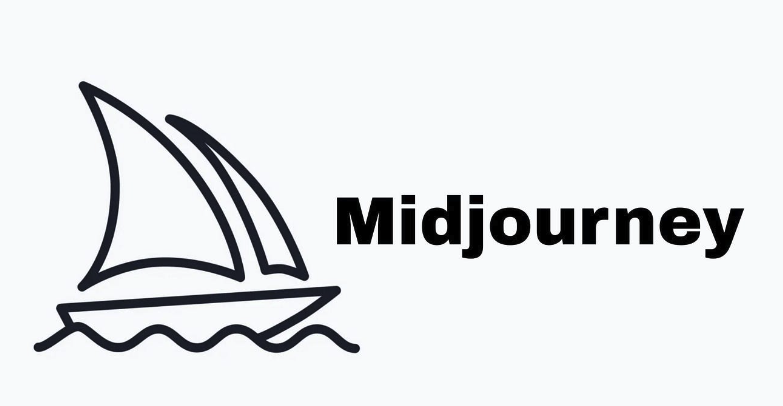What is Midjourney?
Midjourney is an AI-powered text-to-image generation tool that allows users to create unique and visually striking images from simple text prompt. It uses advanced machine learning techniques, including large language models and diffusion models, to transform descriptions into coherent visuals
Key Features of Midjourney
Midjourney offers a range of key features that enhance its functionality as a text-to-image AI generation tool.
- Text-to-Image Generation: Users can create images from detailed text prompts, allowing for a wide variety of artistic styles, including realistic, surreal, and abstract.
- Artistic Styles: The platform supports multiple artistic styles, enabling users to generate images that cater to specific aesthetic preferences.
- Creative Control: Midjourney provides users with extensive control over the output, including options for image size, resolution, aspect ratio, and other parameters.
- Outpainting: This feature allows users to extend images beyond their original boundaries, facilitating creative expansions of existing visuals.
- Background Removal: Users can easily remove backgrounds from images, enabling them to replace them with new ones or create clean, isolated visuals.
- High Image Resolution: Midjourney generates images with resolutions up to 1,792 x 1,024 pixels, ensuring detailed and high-quality outputs.
See Midjourney Pricing Details
How Midjourney works?
How Midjourney works in a more detailed, step-by-step manner:
- User Input The process begins when a user provides a text prompt. This prompt is a description of the image they want to create, for example, “A futuristic city with flying cars at sunset.”
- Natural Language Processing (NLP) Midjourney’s AI first uses NLP techniques to understand and interpret the text prompt. It breaks down the prompt into key concepts, attributes, and relationships.
- Image Generation Process The core of Midjourney’s operation is based on a type of AI called a diffusion model. Here’s how it works: a) Starting Point: The process begins with random noise. b) Iterative Refinement: The AI gradually refines this noise into an image that matches the prompt. c) Multiple Passes: This refinement happens over many iterations, each time making the image clearer and more closely aligned with the prompt.
- Style and Content Matching As the image forms, Midjourney draws upon its vast training data to match:
- Content: Objects, scenes, and concepts described in the prompt.
- Style: Artistic techniques, color palettes, and compositional elements that fit the description.
- Parameter Adjustments The AI considers any additional parameters specified in the prompt, such as aspect ratio or stylization level.
- Multiple Variations Midjourney typically generates four different interpretations of the prompt, offering users variety and choice.
- Output Generation The final images are rendered and presented to the user through the Discord interface.
- User Interaction and Refinement After seeing the initial results, users can:
- Upscale: Increase the resolution of a chosen image.
- Vary: Generate new variations based on a specific result.
- Refine: Use additional prompts to guide the AI towards desired changes.
- Continuous Learning While Midjourney doesn’t learn from individual user interactions, the team behind it continuously refines the model based on overall usage patterns and feedback.
- Ethical Considerations Throughout this process, Midjourney applies filters and safeguards to prevent the generation of harmful or explicit content.
Get Started with Midjourney in a Step-by-Step Process
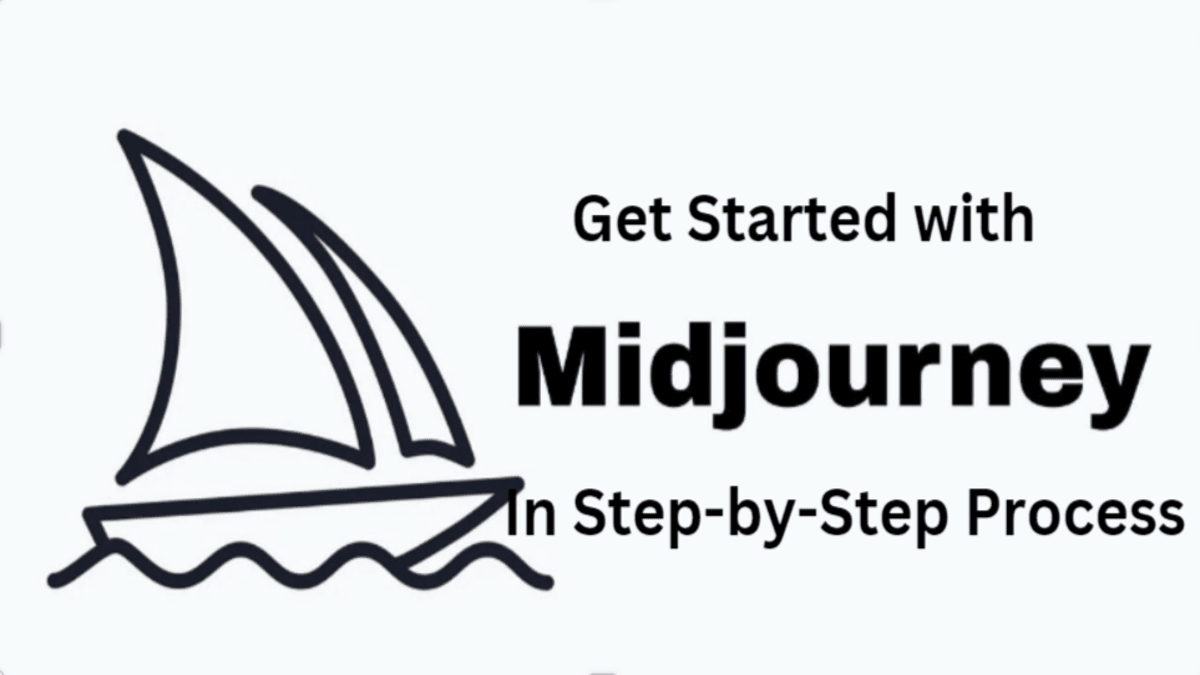
Here’s a step-by-step guide on how to get started with Midjourney and produce your first images:
Step 1: Set up Discord and Midjourney accounts
- Sign up for a Discord account if you don’t have one already.
- Visit the Midjourney website and click on “Join the Beta” or use the Discord invite link to access the Midjourney server.
Step 2: Join the Midjourney Discord server
- Accept the invitation to join the Midjourney Discord server channel.
- Go to any #General or #Newbie channel to start generating images.
Step 3: Subscribe to a Midjourney plan
- Use the /subscribe command in a #newbies channel to generate a personal link to the subscription page.
- Choose from the three Midjourney subscription tiers based on your needs and budget.
Step 4: Generate your first image
- In a #newbies channel, type /imagine followed by a text prompt describing the image you want to create.
- For example, /imagine a futuristic AI programmer writing code.
- Midjourney will generate four image options based on your prompt.
Step 5: Process the job
- You can use the /info command to check your current jobs running and remaining trial time.
- The generated images will have two rows of buttons:
- U buttons upscale the selected image
- V buttons create slight variations of the selected image
- The 🔄 button reruns the job
Step 6: Save your creation
- Once you’re satisfied with the generated image, you can save it to your local device.
Best Practices for Using Midjourney
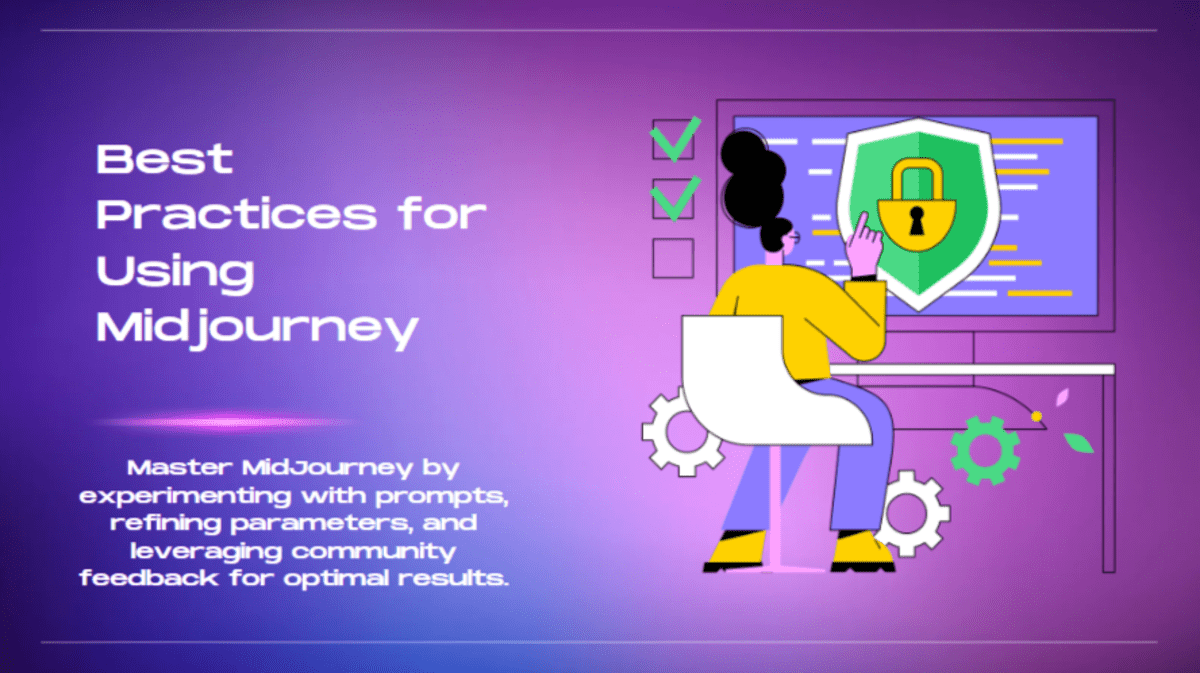
- Define Your Objective
Before creating a prompt, clarify what you want to achieve. Whether it’s to evoke emotion, tell a story, or explore a visual concept, a clear objective will guide your prompt creation and lead to more relevant outputs.
- Craft Clear and Descriptive Prompts
Use simple, concise language that accurately describes your desired image. Avoid overly complex or vague prompts, as they can lead to unsatisfactory results. Balancing detail with clarity is crucial for effective communication with the AI.
- Experiment with Artistic Styles
Incorporate specific artistic styles or techniques in your prompts to influence the overall aesthetic of the generated images. This can include references to famous artists, genres, or visual elements.
- Utilize Parameters
Familiarize yourself with Midjourney’s parameters, such as aspect ratio, style, and quality settings, to fine-tune your images. For example, adding “–ar 16:9” adjusts the aspect ratio, while “–v 5” specifies the version of the AI model to use.
- Iterate and Refine
Don’t hesitate to adjust your prompts based on the outcomes you receive. Use the variations and upscaling options to explore different interpretations of your initial idea.
- Engage with the Community
Participate in the Midjourney Discord community to share your creations, seek feedback, and learn from others. Observing how fellow users craft their prompts can provide valuable insights and inspiration.
- Utilize Negative Prompts
In MidJourney, utilizing negative prompts involves saying no to the parameters specifying elements that you do not want to appear in the generated images. This helps to refine and direct the AI’s output more precisely, ensuring the final image aligns better with your vision by excluding unwanted features.
- Combine Unexpected Elements
Combining unexpected elements in MidJourney is a creative approach to generating unique and surprising images by blending disparate concepts, themes, or objects. This technique can yield visually striking and imaginative results, making it an excellent tool for artists, designers, and creatives looking to push the boundaries of conventional imagery.
Integrating MidJourney with Creative Tools
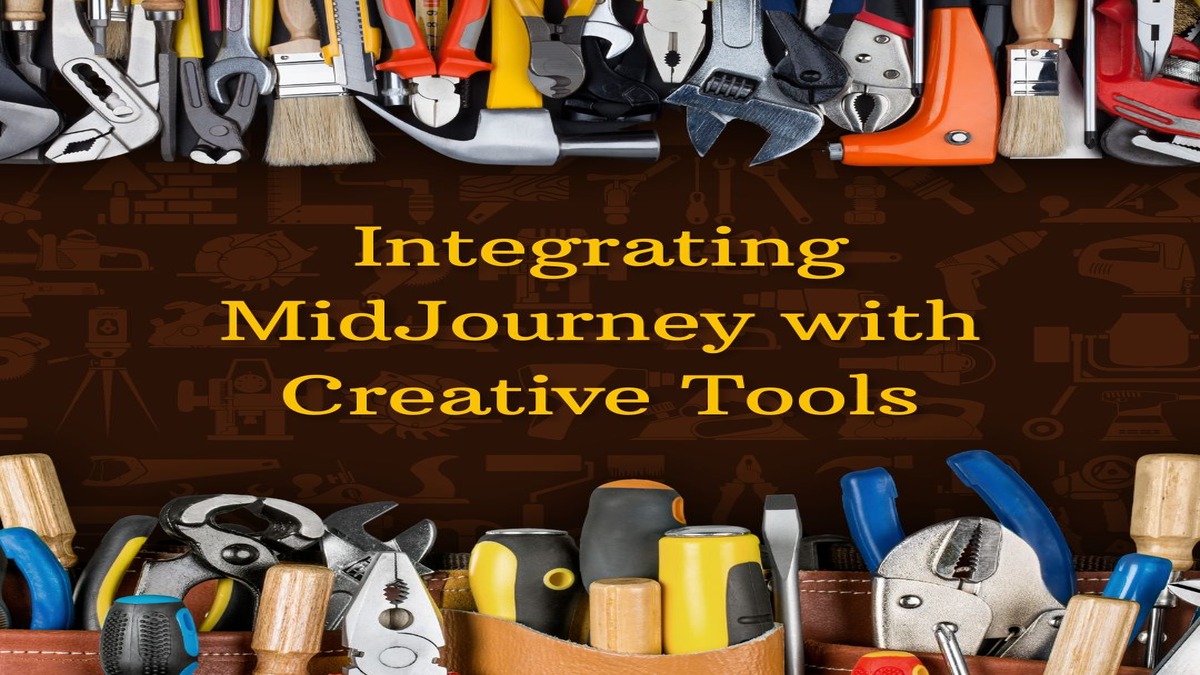
- Adobe Photoshop
The integration of Midjourney with Adobe Photoshop’s new generative fill features allows users to refine and enhance AI-generated images. This combination streamlines the workflow, enabling artists to upscale images, adjust prompts, and seamlessly integrate various elements into a cohesive scene. Users can import Midjourney images into Photoshop, use generative fill to modify details, and create complex compositions that would be challenging to achieve solely within Midjourney. This synergy is particularly beneficial for creating book covers, concept art, or any project requiring detailed visual elements 5.
- Illustration and Design Tools
By exporting Midjourney-generated images to illustration software like Procreate or Adobe Illustrator, users can further refine their designs. This process allows for greater control over details, enabling artists to add personal touches or create unique illustrations based on AI-generated concepts.
- Video Editing Software
Incorporating Midjourney images into video editing tools such as Adobe Premiere Pro can enhance visual storytelling. Creators can use AI-generated backgrounds or thematic visuals to elevate their video content, making it more engaging and visually appealing.
- Social Media and Marketing Tools
Using Midjourney images in conjunction with platforms like Canva can help create eye-catching social media posts and marketing materials. The unique visuals can attract attention and enhance brand identity across various channels.
- Collaboration with Other AI Tools
Combining Midjourney with other AI applications, such as ChatGPT for content generation, can lead to innovative projects. For instance, generating a narrative with ChatGPT and visualizing it through Midjourney creates a cohesive experience that blends text and imagery.
By leveraging these integrations, users can enhance their creative output and maximize the potential of Midjourney, resulting in high-quality, unique images that complement their artistic vision.
Common Issues or Challenges with Midjourney
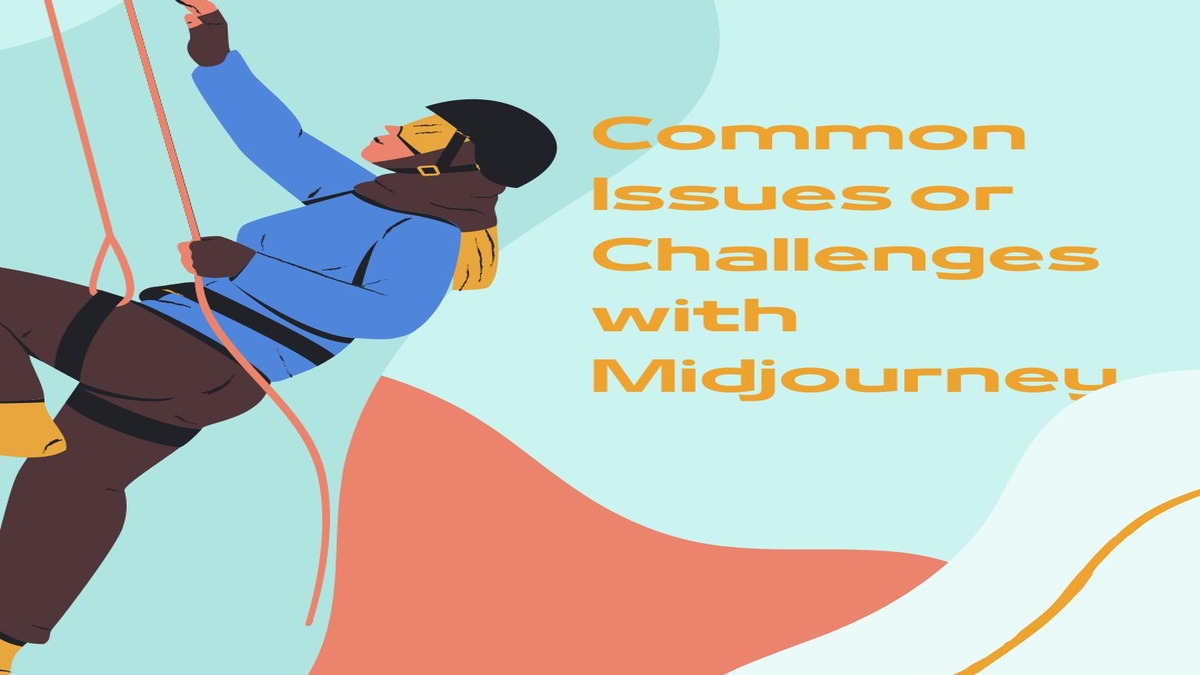
Common issues with Midjourney can impact user experience and image generation quality. Here are some of the most frequently reported problems:
- Strict Censorship
Users have noted that the platform’s content moderation can be overly strict, leading to innocent prompts being blocked. This can hinder creativity and limit the types of images that can be generated.
- Discord Interface Limitations
Many users express frustration with the Discord-based interface, finding it less intuitive than a dedicated web application. The reliance on Discord can complicate formatting and control over the image generation process.
- Image Distortion
A common complaint involves the distortion of human body parts in generated images, such as extra fingers or unrealistic proportions. This issue often requires users to experiment with prompts to minimize these artifacts.
- Response Failures
Users frequently encounter the “Midjourney did not respond” error, which can be triggered by high server loads, bot crashes, or Discord outages. This can disrupt the workflow and lead to frustration.
- Lack of Payment Options
Some users have pointed out the absence of payment methods like PayPal, which can restrict access for potential subscribers who prefer those options.
- Limited Understanding of Artistic Input
Users have reported that the AI struggles to interpret rough sketches or artistic elements accurately, often resulting in outputs that diverge significantly from the intended design.
- No API Access
The absence of an API limits integration possibilities with other applications, which could enhance usability and functionality for developers and advanced users.
According to recent reports, Midjourney has ambitious plans to expand beyond its current text-to-image capabilities and develop a comprehensive “world simulation” tool.
Future Development of Midjourney
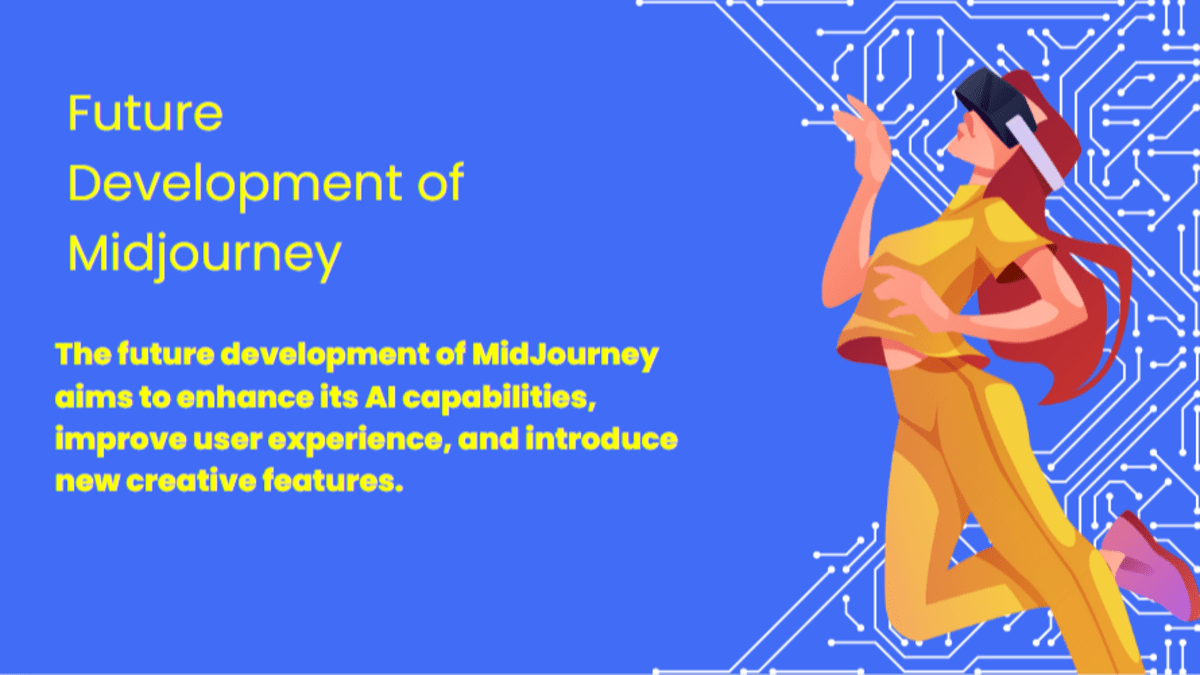
The key future developments of Midjourney include:
- 3D Image Generation
Midjourney is working on building a 3D version of its AI model that can generate images in three dimensions. This would allow for the creation of more immersive and interactive visuals.
- Video Generation
In addition to 3D, Midjourney is also developing video generation capabilities. This would enable the AI to create moving images and short videos based on text prompts.
- Real-Time Generation
The company aims to create a real-time version of its AI that can generate images and visuals extremely quickly. This could enable applications like interactive virtual environments and video games.
- Open World Sandbox
Midjourney’s long-term goal is to combine its 3D, video and real-time AI models into an “open world sandbox” – a virtual environment where users can create anything from video games to movies using AI-generated content
Conclusion
In conclusion, Midjourney is a powerful AI tool for generating art, allowing users to easily create stunning visuals from text prompts. This guide has covered essential aspects such as crafting prompts and adjusting parameters to enhance your experience. As you explore and experiment, remember that mastering Midjourney comes from continuous exploration and creativity. Embrace the creative process, engage with the community, and push the limits of your imagination. Start creating unique masterpieces with Midjourney today.
FAQs for Midjourney
1. What is Midjourney?
Ans. Midjourney is an AI-powered platform that generates high-quality images from text prompts. It uses advanced machine learning algorithms to create artwork based on user inputs, offering a powerful tool for artists, designers, and anyone interested in exploring AI-generated art.
2. How do I start using Midjourney?
Ans. To start using Midjourney, sign up for an account on their website. Once registered, you can access the platform through a web-based interface or via their Discord server. Begin by entering text prompts to generate images and experiment with different settings to refine your results.
3. What are text prompts in Midjourney?
Ans. Text prompts are descriptions or instructions you provide to Midjourney to guide the AI in generating images. The more detailed and specific your prompt, the better the AI can understand and produce the desired artwork. For example, “a serene landscape at sunset” can yield a detailed and picturesque scene.
4. How can I improve the quality of the images generated?
Ans. Improving image quality involves crafting detailed and clear text prompts, using specific parameters, and experimenting with different styles and adjustments. Providing context and adding descriptive details in your prompts can help the AI produce higher-quality and more accurate images.
5. What are parameters and how do they affect my images?
Ans. Parameters in Midjourney allow you to control various aspects of image generation, such as style, aspect ratio, and detail level. Adjusting these parameters helps tailor the results to your needs. For example, setting a high detail parameter can enhance the intricacy of the generated images.
6. Can I use Midjourney for commercial purposes?
Ans. Yes, you can use images generated by Midjourney for commercial purposes, but it is important to review and comply with Midjourney’s licensing and usage policies. Ensure that you have the appropriate rights and permissions for any commercial use of the generated content.
7. How do I use negative prompts in Midjourney?
Ans. Negative prompts are used to specify elements or styles you want to avoid in your generated images. By including phrases like “no clutter” or “without text,” you can guide the AI to exclude certain features and better align the results with your vision.
8. What is the best way to combine unexpected elements in my prompts?
Ans. Combining unexpected elements involves integrating diverse or unusual concepts into your text prompts. For instance, merging “a futuristic cityscape” with “a medieval castle” can create unique and imaginative visuals. Experimenting with such combinations can lead to creative and novel results.
9. How can I control stylization in Midjourney?
Ans. You can control stylization by using specific parameters and descriptive language in your prompts. For instance, including terms like “vintage” or “abstract” can influence the artistic style of the generated images. Experiment with different styles to achieve the desired look.
10. What future developments can we expect from Midjourney?
Ans. Future developments for Midjourney may include enhanced AI algorithms, more sophisticated image editing tools, and expanded integration with other creative platforms. Keep an eye on updates and announcements from Midjourney for the latest features and improvements.
Read More: Top 10 Popular AI Image Generators in 2024

